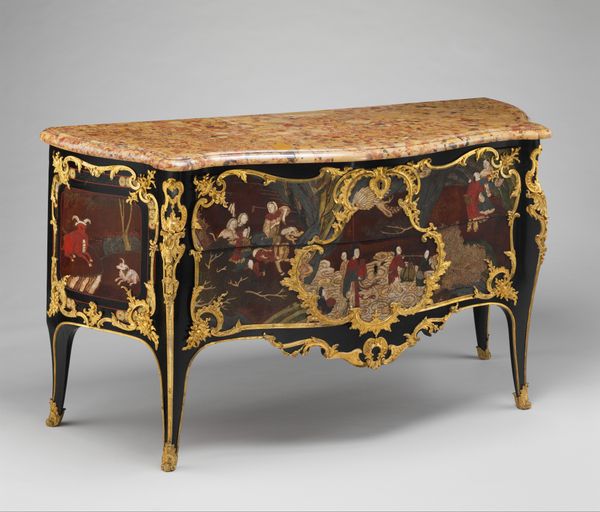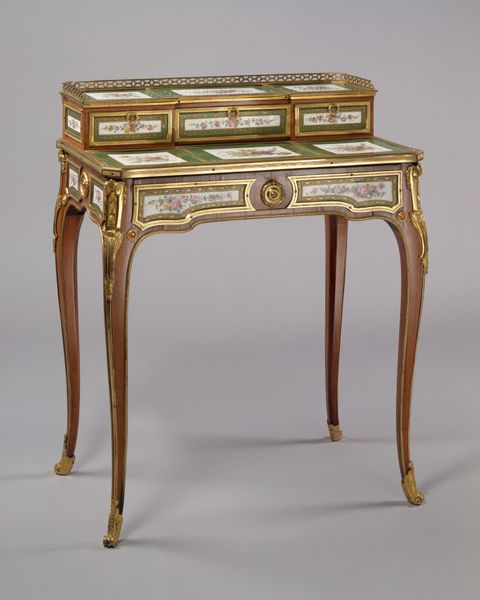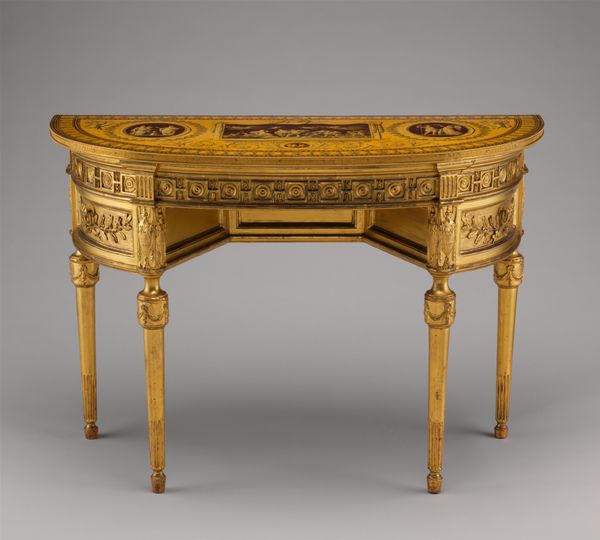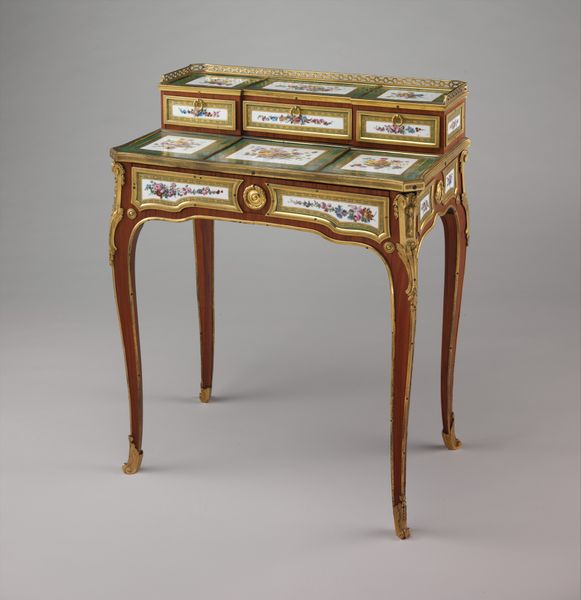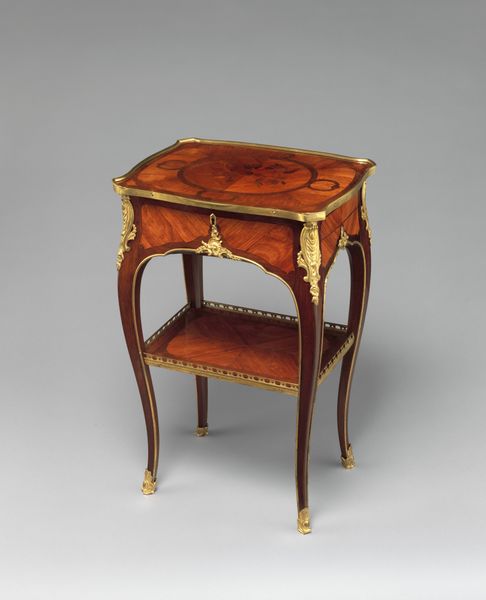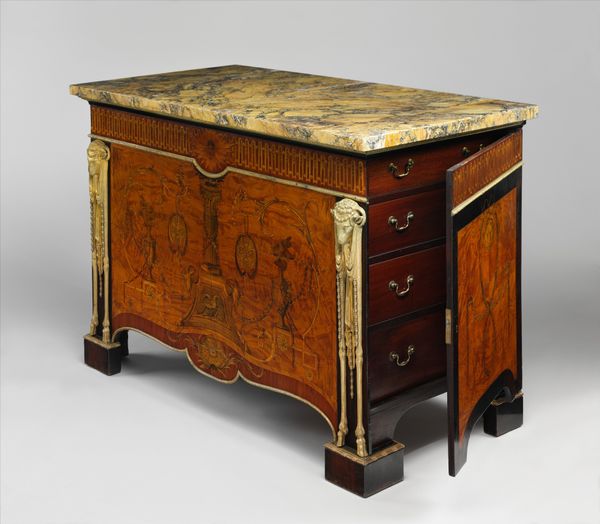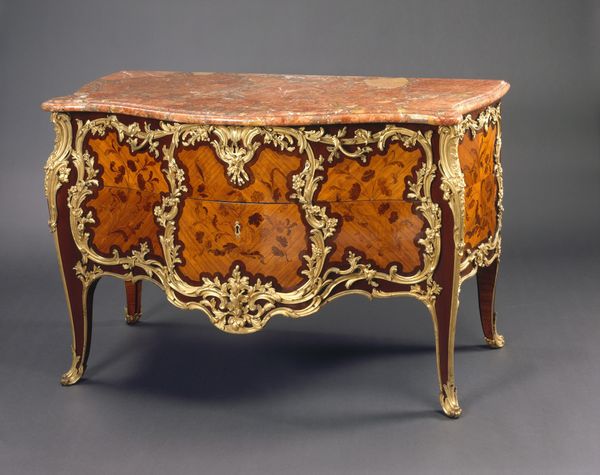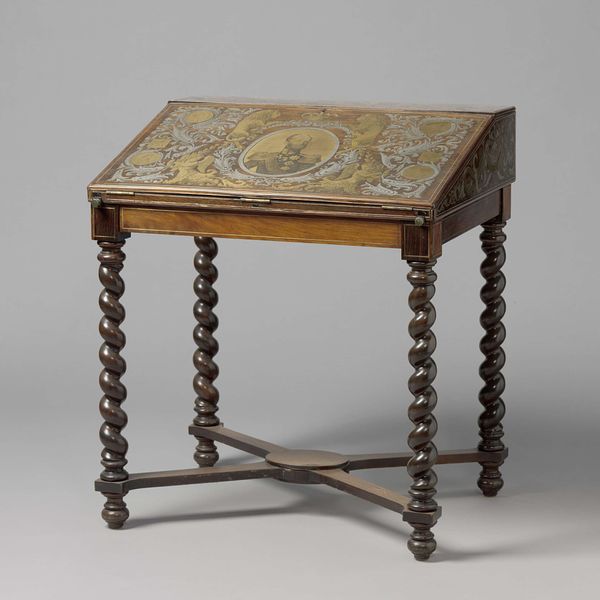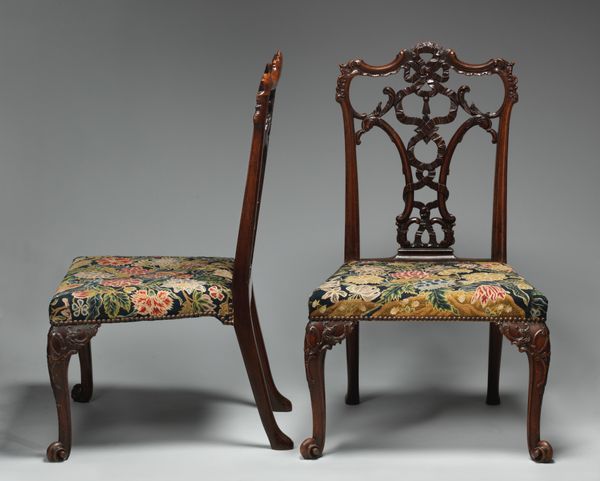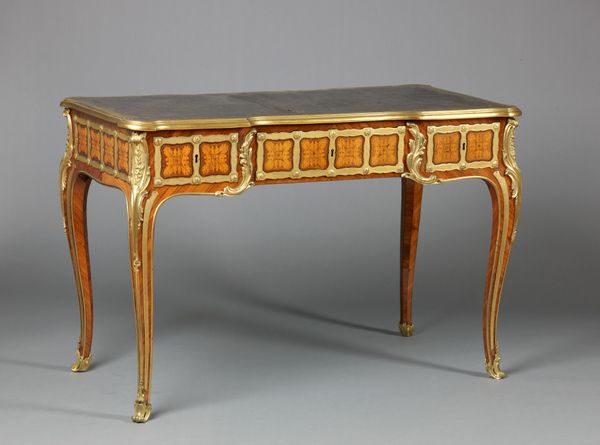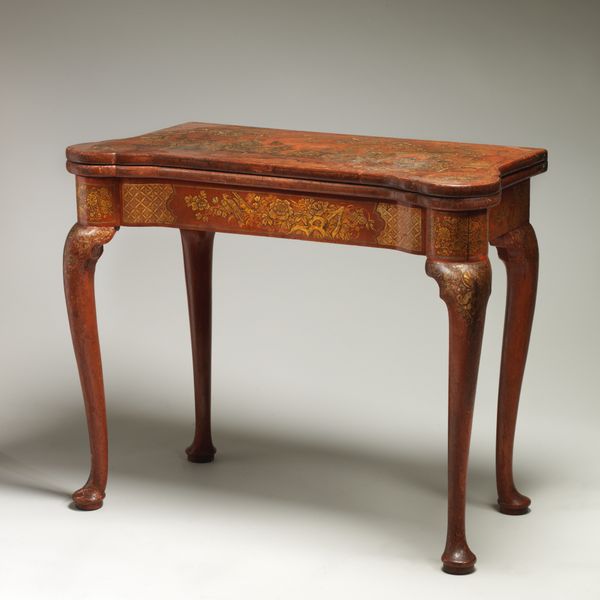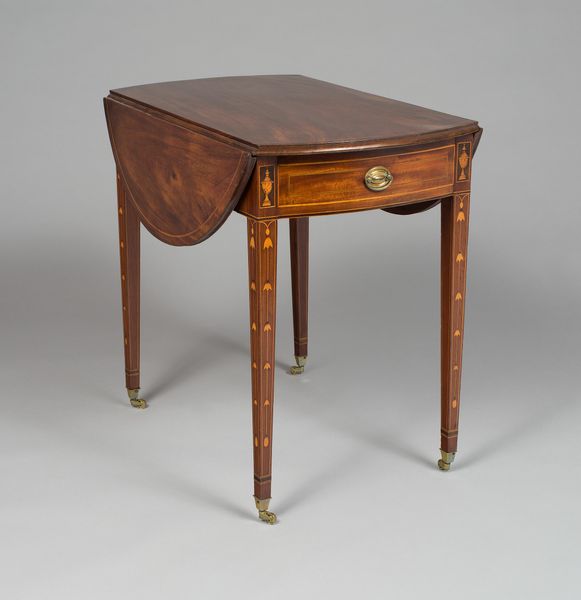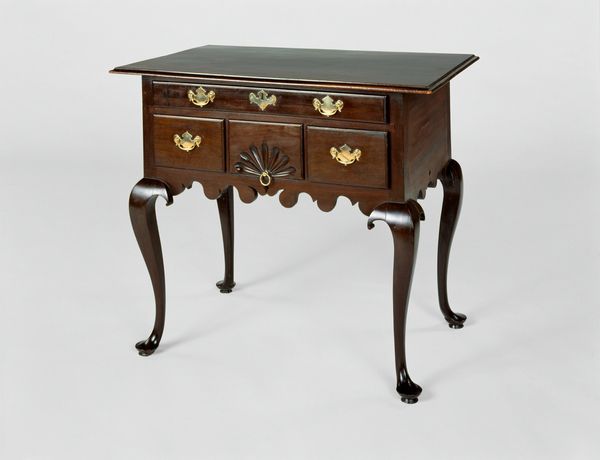
Dimensions: Overall (.1): 27 1/4 × 17 3/4 × 14 7/16 in. (69.2 × 45.1 × 36.7 cm); Overall (.2): 27 1/8 × 17 7/8 × 14 7/16 in. (68.9 × 45.4 × 36.7 cm)
Copyright: Public Domain
Curator: Welcome. Here we have a delightful pair of Neoclassical tables, dating from the 18th century. Their creator is unknown, yet their presence is assured, offering elegance in wood, paint, and gilding. Editor: My first thought is of a garden party! That soft green and shimmering gold is unexpectedly refreshing. They’re also rather formal. It’s an interesting contrast. Curator: Indeed. Tables like these, beyond their immediate function, played a critical role in signifying wealth and status. These embody a revival of classical forms that resonated deeply with elite tastes of the period. Their elegant designs reflected ideals of order, reason, and proportion, promoted by Enlightenment thinkers, as the archeological discoveries of Pompeii and Herculaneum filtered into artistic sensibilities across Europe. Editor: The allegorical figures painted across the frieze certainly evoke that classical revival. It's worth remembering how carefully these symbols were selected. What was being communicated to those who gathered in these spaces? Was it purely aesthetics, or were they subtly reinforcing social hierarchies, telling silent stories about who belongs and who doesn’t? Curator: Exactly. Objects within the home functioned as powerful indicators of cultural capital. Notice also the carved feet, fashioned after lion paws. These are not merely decorative; they establish a link to antiquity and symbolize power and strength. And the fact that we encounter them as a *pair* further reinforces the emphasis on balance and symmetry characteristic of the era. Editor: Yes, but considering these objects solely within their intended elite context overlooks the labor involved in their creation. These tables would have been crafted by skilled artisans, largely anonymous, whose stories and experiences are conspicuously absent from the historical record. How can we bring their labor, their skill, into the discussion? What can we learn by thinking beyond the tastes of the elite patrons? Curator: That's a vital perspective. Acknowledging that absence compels us to look deeper, beyond the polished surface, to seek out and elevate the voices of those whose contributions have been historically marginalized. Editor: Absolutely. I am also moved by how art can tell stories beyond what was originally intended by both patron and artist; objects transform in meaning as their position within the cultural landscape transforms over time. Curator: It seems to me these tables not only reflect but continue to prompt discussion regarding power, labor, and the stories we tell ourselves about our past. Editor: Absolutely! These elegant objects leave me pondering the complex relationship between art, social power, and collective memory.
Comments
No comments
Be the first to comment and join the conversation on the ultimate creative platform.

